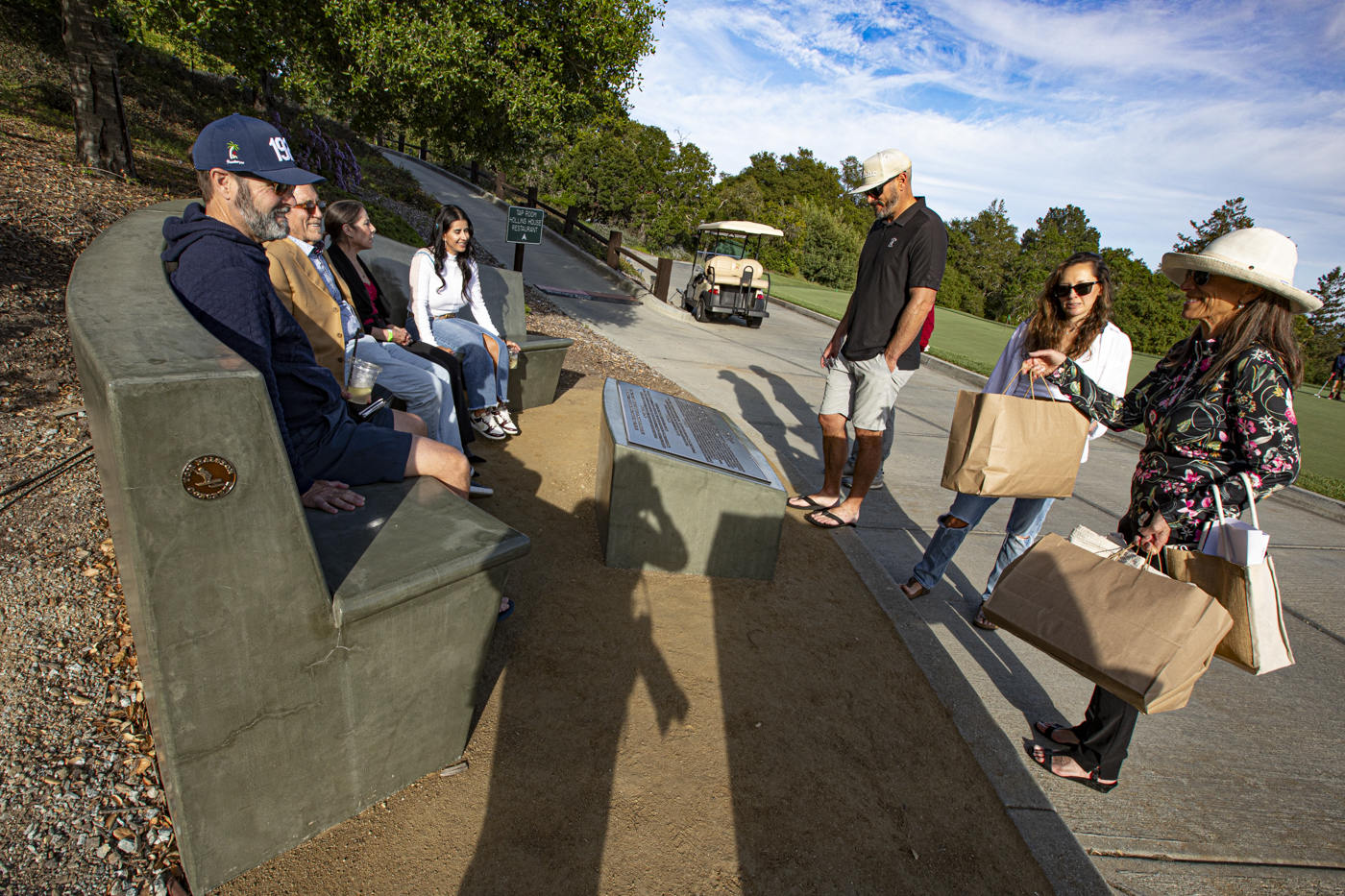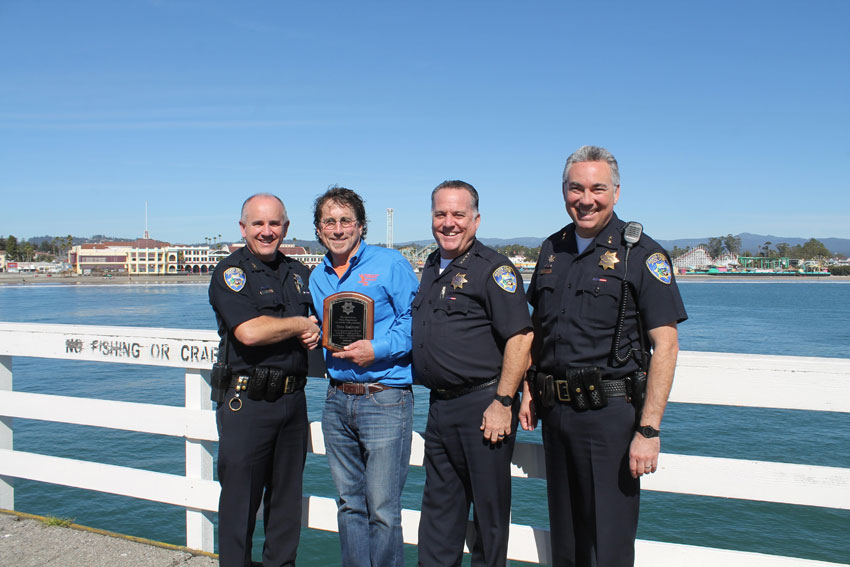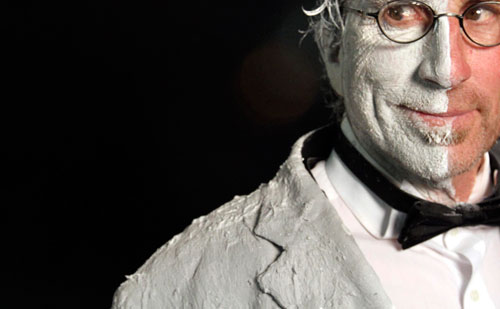Blog
- Details
- Written by: interGen Support
Tom Ralston concrete helped design this organic Sandwash hardscape replete with black Mexican pebbles that serve as dividers and a drain system. Shoreline Landscape designed the softscape and acted as a plant and features design consultant, while Cen Con Construction built a Kadu Batu raised deck, bench, gate, fence, and Jacuzzi surrounds.
Drone video production and editing: David Levy • Levy Media Works
- Details
- Written by: interGen Support
This video, “Honoring Our Ancestors by Sharing History,” features the Santa Cruz Evergreen Chinese Memorial.
Video created by Andrew O’Keefe and is shared here with permission. Learn more about Andrew’s work at www.andrewjokeefe.com
- Details
- Written by: interGen Support
Tom Ralston Concrete worked with 3-other contractors on the day of this pour; over 50-finishers poured out over 8-trucks from 6:00 a.m. to 9:00 p.m. Piping concrete down a hill and spraying it onto a dome-shaped house.
Thanks to our friends at Levy Media Works for capturing beautiful aerial video of the community projects completed by Tom Ralsto Concrete throughout Santa Cruz. Check them out on their website and Instagram!
- Details
- Written by: interGen Support

On April 11, 2025, Pasatiempo Golf Club in Santa Cruz, California unveiled three bronze statues honoring golf course developer Marion Hollins, her dog Carlos, and course architect Dr. Alister MacKenzie. The installation was commissioned by the Pasatiempo Historical Foundation, led by Chair Linda Sorensen and Vice Chair Emily Chorba.
Tom was selected to design several key elements for the site:
-
A custom donor bench featuring a sloped back and tilted seat with integrated drainage and custom colors. The bench was strategically placed to offer clear views of the first tee and sweeping vistas of Monterey Bay.
-
Two stone plinths to support bronze donor recognition plaques
-
A poured pad for the life-size bronze statues
-
An informational kiosk sharing the historical significance of Pasatiempo and its founders
- Details
- Written by: interGen Support
Our friends at Levy Media Works captured some beautiful aerial video of the community projects completed by Tom Ralsto Concrete throughout Santa Cruz. Check them out on their website and Instagram!
View this post on Instagram
- Details
- Written by: interGen Support
Our friends at Levy Media Works captured some beautiful aerial video of the community projects completed by Tom Ralsto Concrete throughout Santa Cruz. Check them out on their website and Instagram!
Last stop on a drone tour of some the the communitu projects completed by @tomralstonconcrete in Santa Cruz, we arrive at Pleasure Point on the east side.
An amphitheater incorporates beautifully colored concrete with real sea shells, beach glass, shark teeth and fossil replicas from the Monterey Bay.
The main embed was a replica of a 5-million year old whale bone that was located in May of 2010 approximately 500 yards south of the amphitheater.
The terraces mimic the geology of the ocean shelves of Monterey Bay. As one sits on the concrete ‘shelves’ you have an uninterrupted view of surfers riding the Pleasure Point waves.
This is a great spot to meet up with friends or family, walk the dog , push strollers, people watch or catch a sunrise. 🌅
- Details
- Written by: interGen Support
Our friends at Levy Media Works captured some beautiful aerial video of the community projects completed by Tom Ralsto Concrete throughout Santa Cruz. Check them out on their website and Instagram!
Next up on a drone tour of some of the community projects completed by @tomralstonconcrete in Santa Cruz, we are leaving the west side and heading to midtown to the @riotheatresantacruz — a historic landmark built in 1949, with a unique “cycloramic” screen which gave a wrap-around panorama and illusion of depth.
A new green color-infused concrete sidewalk with a red curb + gutter, and three bronze safety bollards were installed at the front entrance. Embedded in the concrete is the Rio Theater’s logo and a historical plaque featuring Laurence Bedford’s profile, both cast in bronze.
Local singer-songwriter Tom Ralston’s Band will play a benefit concert for @secondharvestsantacruz on Saturday December 2, 2023 at the Rio Theater, from 7pm - 10pm. The band has a unique sound incorporating jazz, soul, and rock, with his 14-piece ensemble with string and horn section.
- Details
- Written by: interGen Support
Our friends at Levy Media Works captured some beautiful aerial video of the community projects completed by Tom Ralsto Concrete throughout Santa Cruz. Check them out on their website and Instagram!
Next up on a drone tour of some of the community projects completed by @tomralstonconcrete in Santa Cruz is Evergreen Cemetery — one of the oldest cemeteries in California, created in 1858.
A new ADA pathway was created that allows everyone to access the cemetery’s grounds. A Chinese Gate ⛩️ commemorates Chinese immigrants who lived and worked in Santa Cruz. As I was filming, a dark-morph red-tail hawk was seemingly keeping guard on top of the gate.
- Details
- Written by: interGen Support
Our friends at Levy Media Works captured some beautiful aerial video of the community projects completed by Tom Ralsto Concrete throughout Santa Cruz. Check them out on their website and Instagram!
Let’s continue a drone tour of some of the community projects completed by @tomralstonconcrete throughout Santa Cruz.
The Surfer Statue stairs allow surfers another access point to the ocean and helps them get in and out of the water.
Cowell’s stepping stones park provides a viewing area for tourists and locals alike to watch the surfers. Kids have a place to play and jump between the rocks.
The roundabout at the entrance to the Santa Cruz Wharf, Beach St. and Pacific Ave. join together in a continuous flow of traffic, instead of having a 4-way Stop or traffic lights. In the center there is a pod of stone dolphins.
- Details
- Written by: interGen Support
Our friends at Levy Media Works captured some beautiful aerial video of the community projects completed by Tom Ralsto Concrete throughout Santa Cruz. Check them out on their website and Instagram!
Let’s take a drone tour of some of the community projects completed by @tomralstonconcrete throughout Santa Cruz. The Princes of Surf plaque at the Santa Cruz Surfing Museum pays homage to the three princes who rode Santa Cruz waves in 1885, the first known instance of mainland surfing. The Steamer Lane stairs were replaced and a concrete path (“Wally Pads”) was poured along the base of the cliffs, to help surfers get in and out of the water.
- Details
- Written by: Tom Ralston
Tom Ralston is friends with Thom Zajac who owns the Comic News. Tom and Thom had lunch together one day and talked about an ad for the Comic News that would be in the vein of comedy. Tom Ralston who has a reputation for being humorous thought it would be fun to spin off a series of cartoons for both the Comic News and Tom Ralston Concrete. Tom is has been engaged in creating decorative concrete for over 30 years, with song writing, leading a band and producing musical shows; but now dips his hand into some original “concrete comedy.”
- Details
- Written by: TRC Staff
Tom Ralston was honored this February 2016 with Santa Cruz’s prestigious Gail Rich Award. Here is the video of the ceremony where Paul Meltzer introduces Tom (at 3:43). Paul considers himself the Dr. Watson and Tom is his Sherlock Holmes. Many will smile when they hear Paul's humorous account of Tom's life, his music, his art, and how all of these are somehow intertwined in his concrete work.
Tom's speech demonstrates how he does all things: with lots of determination, energy and passion (at 8:49). Tom shares his anecdotes while recognizing his friends who have inspired him and expresses how he is touched, humbled, and honored to receive this highly regarded award. Tom runs out of time while thanking (at 16:10) his children, the people in his band, and all in his company.
You really have got to take a listen. The roar of laughter in the background tells us that Tom wasn’t the only one having fun at The Gail Rich!
- Details
- Written by: Tom Ralston
It was an incredible honor on a beautiful Santa Cruz day when the SCPD gave plaques to all who helped construct the Fallen Officers memorial. The tragedy of fallen officers Butch Baker and Elizabeth Butler rocked the entire Santa Cruz Community and will never be forgotten. We were grateful that we could contribute our services to the memorial.

L-R Deputy Chief Steve Clark, Tom Ralston, Police Chief Kevin Vogel, Assistant Police Chief Rick Martinez
- Details
- Written by: Tom Ralston
 Wow…all I can say is “Wow”!!
Wow…all I can say is “Wow”!!
I received a visit from Sentinel journalist/writer Wallace Baine a week ago and he said that I was chosen to be a recipient of the esteemed Gail Rich Award. The award celebrates the spirit of arts in Santa Cruz by “recognizing those who inspire our diverse and culturally rich community”.
My friend Jeff Luhn who is a musician, photographer and conceptual artist had an idea for my upcoming CD release. His idea was to cover half of me with cement and leave the other half alone. I donned a tuxedo to provide an distinct yin-yang. Awesome idea!!
I mentioned this to the amazing photographer, Shmuel Thaler has been photographing the Gail Rich Award honorees (and countless other subjects and events) since its inception and thought the idea was awesome as well. Here are a few of the behind the scenes shots that I wanted to share with my friends on my blog.
